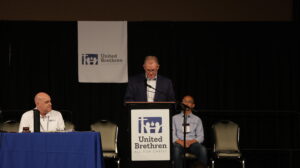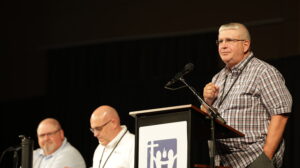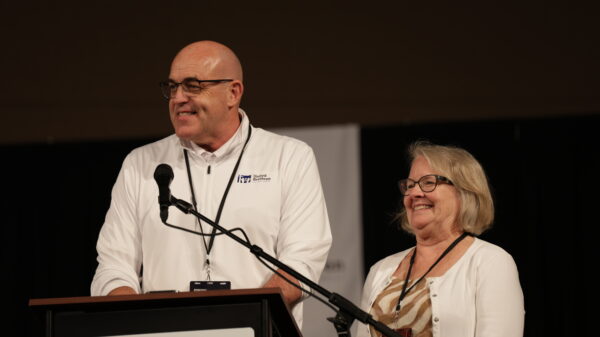June 28, 2011
|
 Steve Dennie, Communications Director
Steve Dennie, Communications Director
Facebook has reached critical mass–over 600 million users worldwide. Lots of people in your church probably use Facebook–far more than you realize. Which begs the question: so what?
Email long ago reached critical mass. If someone was connected to the internet, they probably had an email address. So it made sense to create church email lists as a way to contact people.
Now you should consider adding Facebook to the mix. Your people are already using Facebook–young and old alike. It’s just a matter of going where they already go.
My own church, Anchor Community Church, has been using Facebook for nearly four years. We’ve had our own Facebook Page for two years (a growing number of UB churches have their own Page). Anchor has an attendance of about 130, but have 312 people who “like” our page. We don’t actively promote it. We don’t encourage people to create a Facebook account and come “like” our page. It has just blossomed naturally.
But for me, the benefits of Facebook have little to do with the church page itself. Rather, it’s about people interacting outside of church. Facebook helps promote community, even if it’s only in superficial ways (and on Facebook, there is an abundance of superficial). People who may seldom talk to each other at church may connect regularly on Facebook.
As a layperson at Anchor, I learn a great deal about my fellow Anchorites from Facebook. By reading people’s status messages–things they write which tell something about what’s happening in their life or what they’re thinking about at the moment–I catch numerous glimpses into their life. And that gives me opportunity to interact with them on Facebook and at church.
I learn when people are sick or in the hospital, and how they’re doing as the days pass. I learn about financial hardships, relationship problems, new births, jobs lost and jobs found, myriad concerns, car problems…you name it. I can then respond directly on Facebook, giving encouragement or congratulations or whatever is appropriate.
I learn about hobbies, extended family, favorite sports teams, books they’re reading, TV shows and movies they’re watching, vacation plans, and much more. I can then use this information to strike up a conversation at church, perhaps with someone I don’t know well. Or I can simply comment right on Facebook.
When someone misses church, I send them a note on Facebook saying that I missed them. I compliment people for this and that. Other Anchor people do the same. It’s neat.
When we have special events, I take lots of photos. I post them on the Anchor Facebook page. This draws not only people from the church, but their friends and relatives and distant acquaintances.
And I’m only touching the surface of what you can do with Facebook. Like plugging upcoming events.
It’s not something we officially promote or encourage. It just happens. You don’t see this kind of thing happening with email, Twitter, a church website, or most anything else (young people avoid email, and older people, me included, don’t care to learn all the insider terminology and techniques of Twitter).
With Facebook, you don’t need to goad people into signing up for something new. They’re already signed up. Just go join the conversation.




 Steve Dennie, Communications Director
Steve Dennie, Communications Director